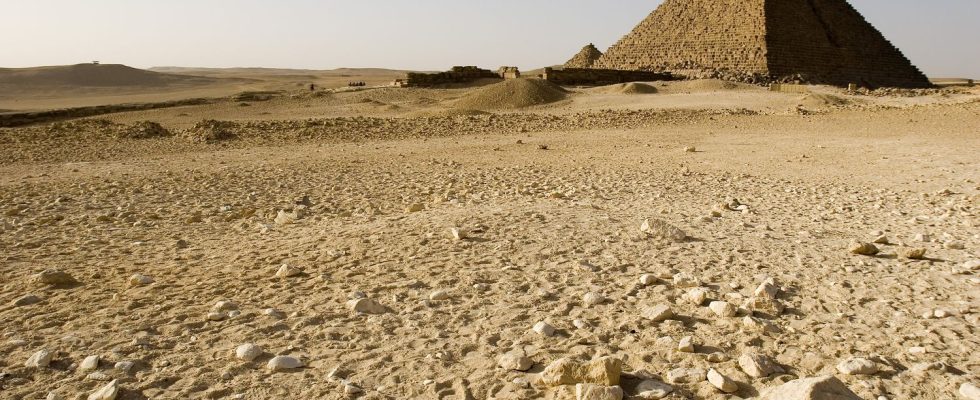This project will last three years, announced the head of the mission in charge of the project.
Published
Update
Reading time: 2 min

For some, it is “the project of the century”for others “an absurdity”. A new plan to renovate the pyramid of Mykerinos, on the Giza plateau, is shaking up all of Egypt. In a video published Friday, the head of the Egyptian Antiquities Department, Mostafa Waziri, shows workers aligning granite blocks on the base of the building, the lowest of the three pyramids of Giza.
When it was built, the pyramid of Mykerinos was covered in granite, but it lost part of its covering over time. The current project aims to restore this layer of granite in order to restore the pyramid to its original appearance. This “renovation” will last “three years” and will be “a gift from Egypt to the world in the 21st century”welcomes Mostafa Waziri, head of the Egyptian-Japanese mission in charge of the project, ensuring that it “will allow us to see, for the first time, the pyramid of Mykerinos as it was built by the ancient Egyptians.”
The preservation of Egyptian heritage, an eternal debate
But, under the video shared on social networks, dozens of horrified commentators lost their temper. “Not possible !”responds, visibly outraged, Egyptologist Monica Hanna on Facebook. “All that was missing was to tile the pyramid of Mykerinos! When are we going to stop the absurdity in the management of Egyptian heritage?”she writes again. “All international principles on renovations prohibit such interventions, all archaeologists must mobilize immediately.”
The question of heritage preservation in Egypt – a country which counts on tourism for 10% of its GDP and where the Cheops pyramid is located, the only one of the seven wonders of Antiquity still visible today – is often discussed. subject of lively debate. The recent destruction of entire sections of historic Cairo has strongly mobilized a civil society that is almost banned from political activities and which now concentrates the bulk of its fight against the regime in the area of town planning and heritage.
The debate has recently focused on a 15th-century mosque in the northern city of Alexandria, the Abu al-Abbas al-Morsi Mosque. The governorate has just announced that it is opening an investigation after a contractor in charge of renovation work decided to repaint the ornate, sculpted and colorful ceilings of the largest mosque in Egypt’s second city in white.
